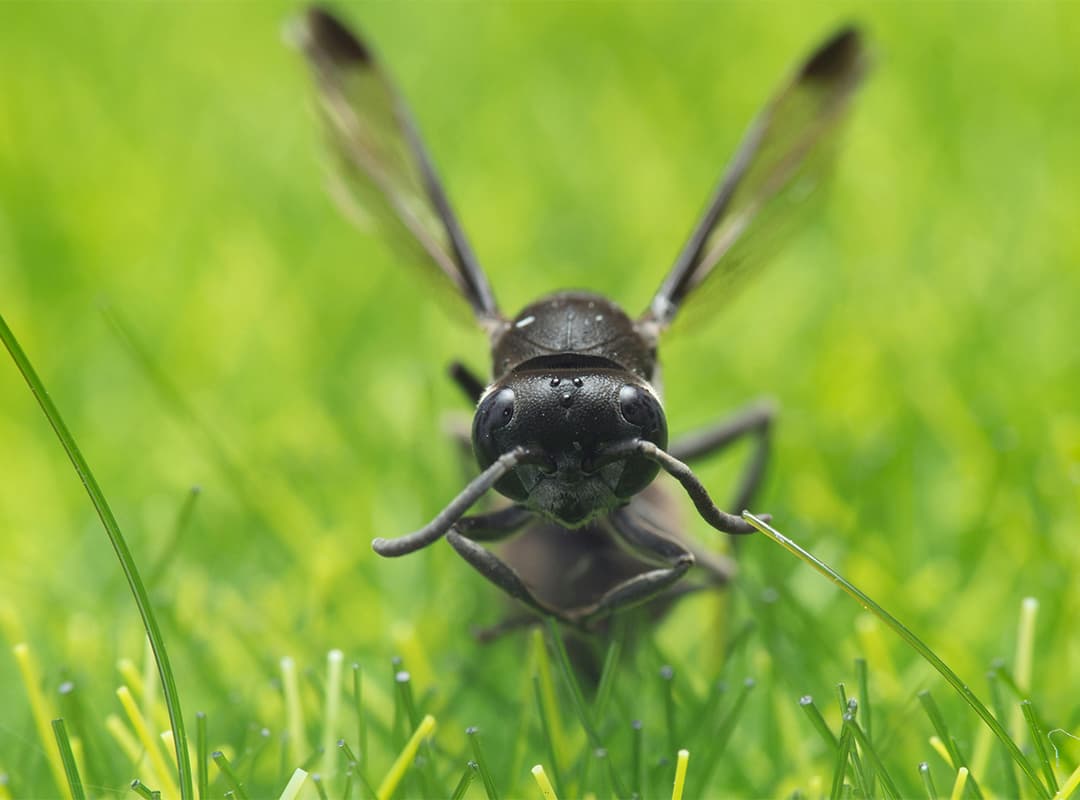Changing climatic conditions are having a significant impact on ecosystems around the world, and parasitoid wasps are no exception. These insects, which play a key role in regulating pest populations and maintaining ecological balance, can experience both positive and negative effects from climate change. In this article, we look at how changes in temperature, humidity, and other climatic factors are affecting parasitoid wasps and what implications this may have for ecosystems.
Changes in Temperature
Temperature is one of the most significant factors affecting the life cycles of parasitoid wasps.
An increase in average temperature can accelerate the development of parasitoid wasp larvae and adults. This can lead to more frequent generations per year, which increases their numbers and potentially increases the effectiveness of pest control. However, too high temperatures can also have negative consequences. For example, extreme temperatures can affect egg and larval survival rates, which can reduce overall wasp numbers.
Rising temperatures may lead to the expansion of the range of parasitoid wasps into new regions. This may create opportunities for colonization of new areas, but may also promote competition with native species and disrupt existing ecosystem balances. In addition, range shifts may facilitate the introduction of new parasitoid wasps into ecosystems where they have not previously been found, which may affect native pests and other ecosystem components.
Changes in Humidity
Humidity affects parasitoid wasps through its effects on their habitat and resources.
Changes in moisture levels can affect vegetation and water availability, which in turn affects the abundance of parasitoid wasp host insects. For example, an increase in humidity can promote plant growth, which can lead to an increase in insect pest populations, providing more resources for parasitoids. On the other hand, too much humidity can lead to the spread of diseases and fungi that can negatively affect wasps.
Humidity also affects the behavior of parasitoid wasps. For example, when humidity is high, they may seek drier breeding sites or look for other ways to adapt to changing conditions. Changes in humidity may also affect their ability to find hosts, especially if the ecosystem conditions in which parasitoids and their prey interact change.
Changing climatic conditions and food resources
Climate change can affect the availability of food and other resources that parasitoid wasps need to survive and reproduce.
Climatic changes can affect host insect populations of parasitoid wasps. For example, increases in temperature and changes in precipitation can alter host life cycles, which can affect their interactions with parasitoids. Some host species may reproduce faster or slower, which in turn affects the availability of food for parasitoid wasps.
Climate change may also affect the resources that parasitoid wasps use to lay eggs and develop larvae. For example, changes in vegetation or food availability for adult wasps may affect their ability to find suitable breeding sites and maintain their populations.
Adaptation and Evolution
Parasitoid wasps are highly adaptable, allowing them to cope with changing climatic conditions.
Gradual changes in climate can lead to evolutionary adaptations in parasitoid wasps. These may include changes in life cycles, behavior, and morphology that help wasps better adapt to new environments. For example, they may develop new host-finding strategies or alter their reproductive cycles to better suit changing environmental conditions.
Parasitoid wasps can modify their behavioral strategies in response to climatic changes.
For example, they can adapt their methods of finding food or breeding sites in response to changes in temperature and humidity. These behavioral changes help wasps make efficient use of available resources and maintain their populations in the face of climate change. Changing climatic conditions have profound effects on parasitoid wasps and their ecosystems. Changes in temperature, humidity, and resource availability can lead to both positive and negative consequences for these insects. Understanding these influences and the adaptive mechanisms of parasitoid wasps is important for developing strategies to protect ecosystems and manage agricultural resources in the face of climate change. Effective observation and research on these processes will help predict potential changes in ecosystems and develop measures to maintain and restore them.
